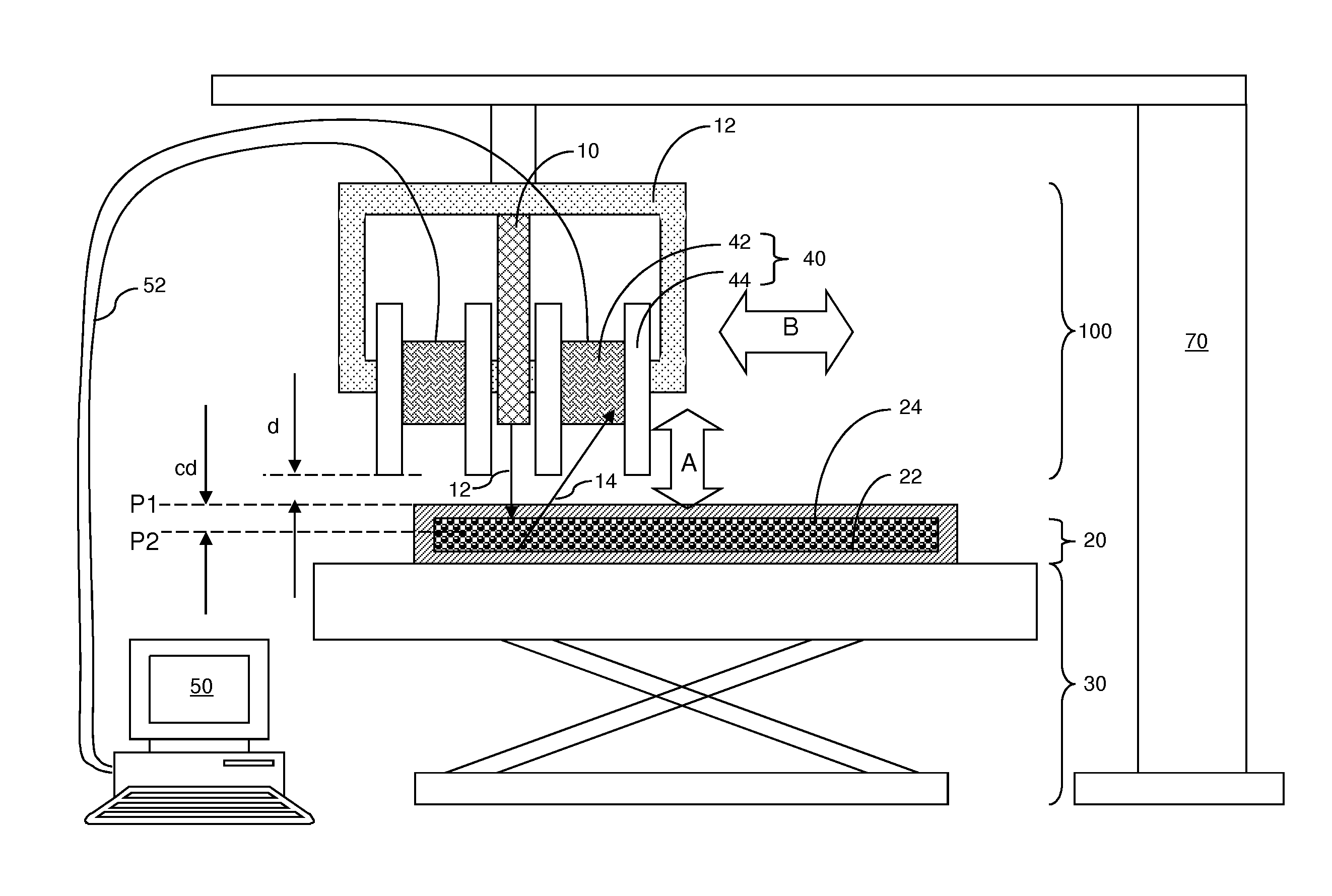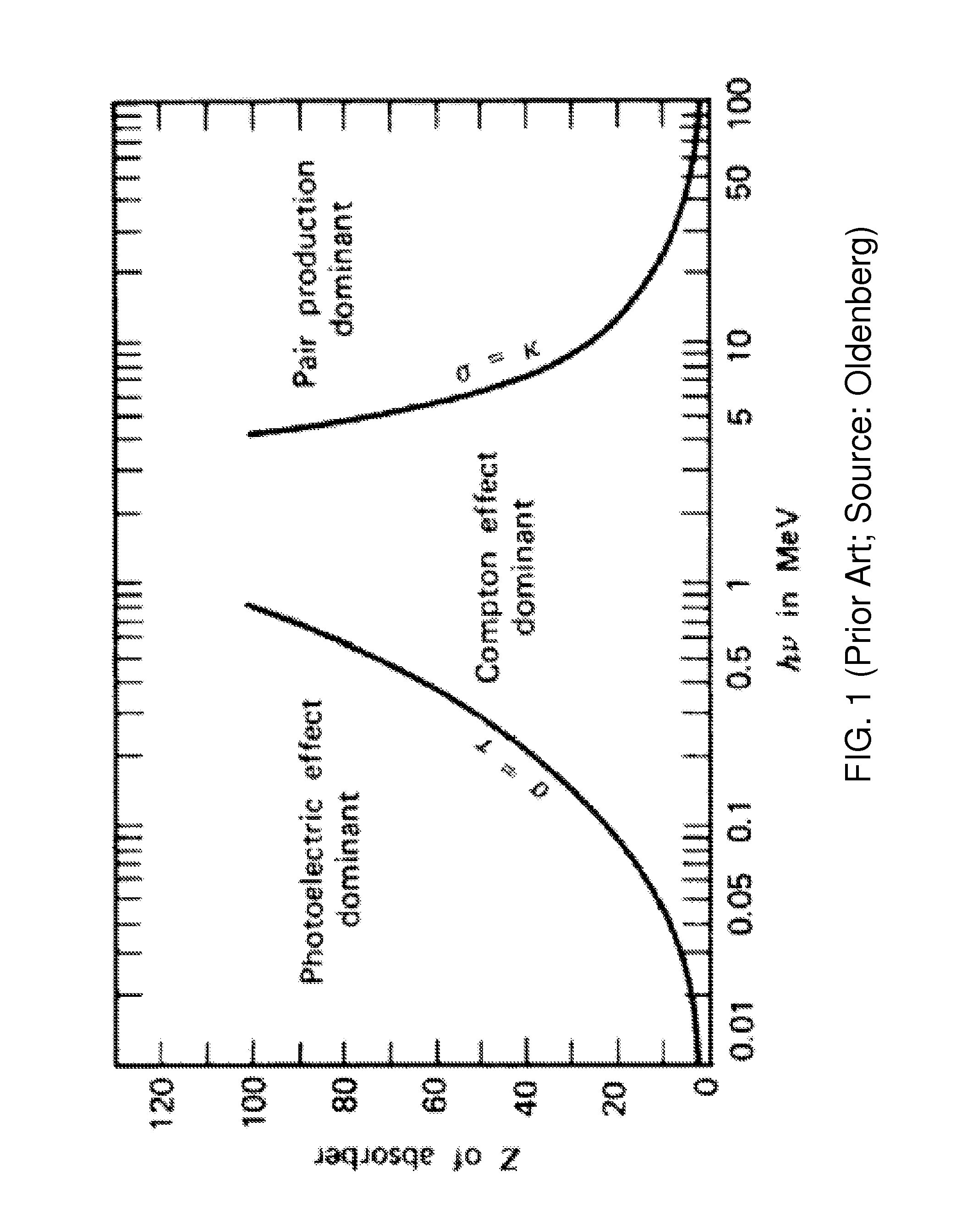X-ray backscatter imaging of nuclear materials
a backscatter imaging and nuclear material technology, applied in the field of x-ray backscatter imaging of nuclear materials, can solve the problems of less efficient scattering interaction, and less efficient backscatter photon production of each scattering even
- Summary
- Abstract
- Description
- Claims
- Application Information
AI Technical Summary
Benefits of technology
Problems solved by technology
Method used
Image
Examples
example
[0097]The backscatter x-ray imaging technique of Radiography by Selective Detection (RSD) was investigated for its ability to determine defect presence and type in a UO2 fuel rod surrounded by Zirconium cladding. A fuel rod was simulated by a rectangular parallelepiped with Zirconium cladding, and pencil beam x-ray sources of 160 kV (79 KeV avg) and 480 kV (218 KeV avg) were generated using Monte Carlo N-Particle transport code (MCNP) to attempt to image void and Pd defects in the interior of the fuel pellet and on the surface of the pellet. It was found that the 160 kV spectrum was unable to detect the presence of interior defects, while the 480 kV spectrum was able to with both the backscatter and RSD methods, though was very inefficient with the RSD method. It was also found that both energy spectrums were able to detect both defects in the surface defect case using both imaging methods. Additionally, two simulation fuel rods were imaged using a backscatter x-ray imaging system. ...
PUM
| Property | Measurement | Unit |
|---|---|---|
| energy | aaaaa | aaaaa |
| atomic number | aaaaa | aaaaa |
| energy | aaaaa | aaaaa |
Abstract
Description
Claims
Application Information
 Login to View More
Login to View More - R&D
- Intellectual Property
- Life Sciences
- Materials
- Tech Scout
- Unparalleled Data Quality
- Higher Quality Content
- 60% Fewer Hallucinations
Browse by: Latest US Patents, China's latest patents, Technical Efficacy Thesaurus, Application Domain, Technology Topic, Popular Technical Reports.
© 2025 PatSnap. All rights reserved.Legal|Privacy policy|Modern Slavery Act Transparency Statement|Sitemap|About US| Contact US: help@patsnap.com



